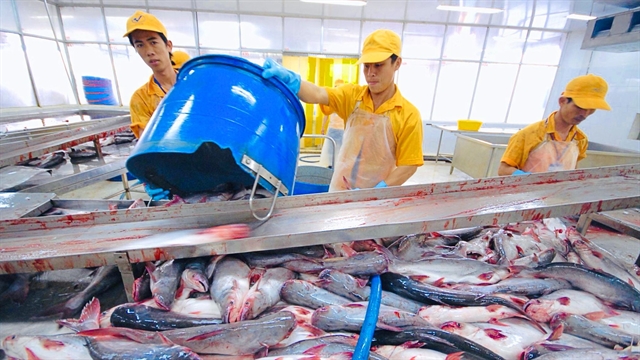Pangasius exports to the CPTPP reached US$305 million in the first 10 months of this year.

HÀ NỘI — Exports of pangasius are expected to focus on expanding into countries under the Comprehensive and Progressive Agreement for Trans-Pacific Partnership (CPTPP) as well as the Middle East in the fourth quarter and next year.
The push into these two regions, according to the Vietnam Association of Seafood Exporters and Producers (VASEP), is expected to continue its upward trend.
Pangasius exports to the CPTPP reached US$305 million in the first 10 months of this year, up 36 per cent year-on-year, accounting for 17 per cent of total pangasius exports.
Meanwhile, exports to the EU reached $149 million, a three per cent increase compared to the same period last year.
“If the industry takes full advantage of tariff preferences and market diversification, the pangasius sector has the opportunity to maintain its recovery and achieve sustainable growth in 2026,” VASEP stated.
Việt Nam’s pangasius exports reached $217 million last month, marking an 8 per cent increase year-on-year.
The cumulative export value surpassed $1.8 billion for the first 10 months, up 9 per cent compared to the same period last year.
Frozen pangasius fillet exports (HS code 0304) reached nearly $1.5 billion in the first 10 months of this year, an 11 per cent growth compared to last year.
Frozen, dried, and whole pangasius exports (excluding HS code 0304) reached $315 million, up just 0.1 per cent.
Notably, processed pangasius products reached $44 million, a growth of 19 per cent compared to the same period, accounting for 2.4 per cent of the total export value.
VASEP assessed that, after a slowdown in Q3, Việt Nam's pangasius exports showed positive signals in some major markets last month, while others remained stagnant due to stockpiles and the holiday import cycle.
Specifically, exports to mainland China and Hong Kong (China) reached $73 million, up 19 per cent over last year.
After stagnating in September, this market resumed its growth, indicating a clear recovery in demand from China, especially in the year-end period, according to VASEP.
For the US, October export value reached $29 million, down 17 per cent year-on-year. In Brazil, after a decrease in September, exports turned around and grew slightly last month, reaching $15 million.
Meanwhile, the UK market continued its downward trend, dropping 33 per cent compared to the same period, with October export value at $4 million.
VASEP forecasted that some major markets might continue to decline in Q4 as demand had not fully recovered.
The most important driving force for the end of the year and into next year was the POR20 results in the US, which would allow businesses to benefit from a zero per cent anti-dumping duty, significantly improving the confidence of US importers, it said.
However, the 20 per cent reciprocal tariff still impacts profit margins, requiring businesses to continue expanding into other markets.
The 12 member countries of the Comprehensive and Progressive Agreement for Trans-Pacific Partnership are Australia, Brunei, Canada, Chile, Japan, Malaysia, Mexico, New Zealand, Peru, Singapore, the United Kingdom and Việt Nam. These countries form one of the world's largest free trade agreements, accounting for approximately 15 per cent of global GDP. — VNS





